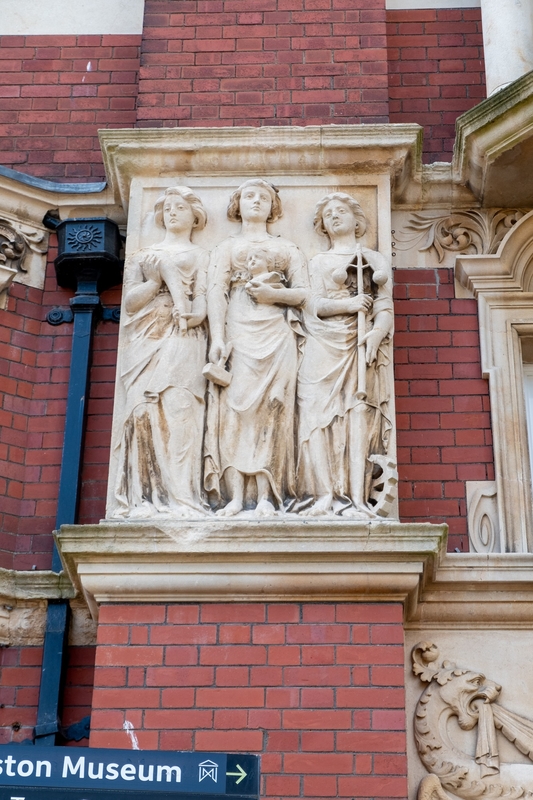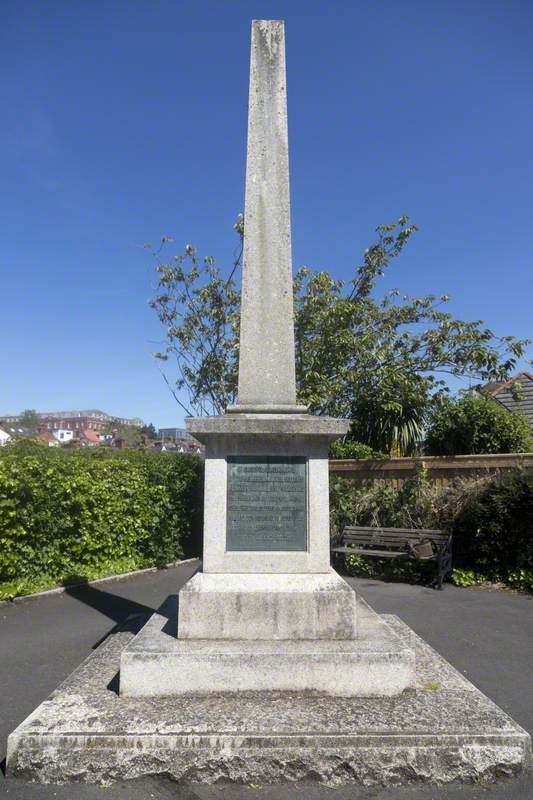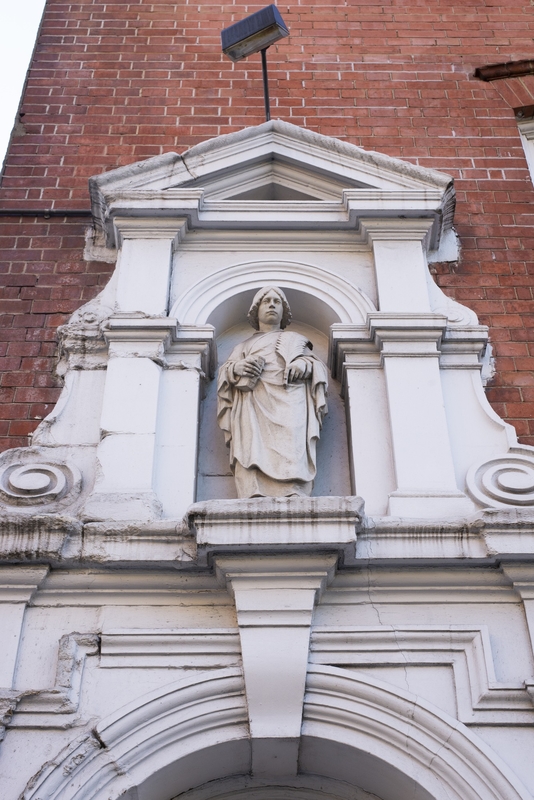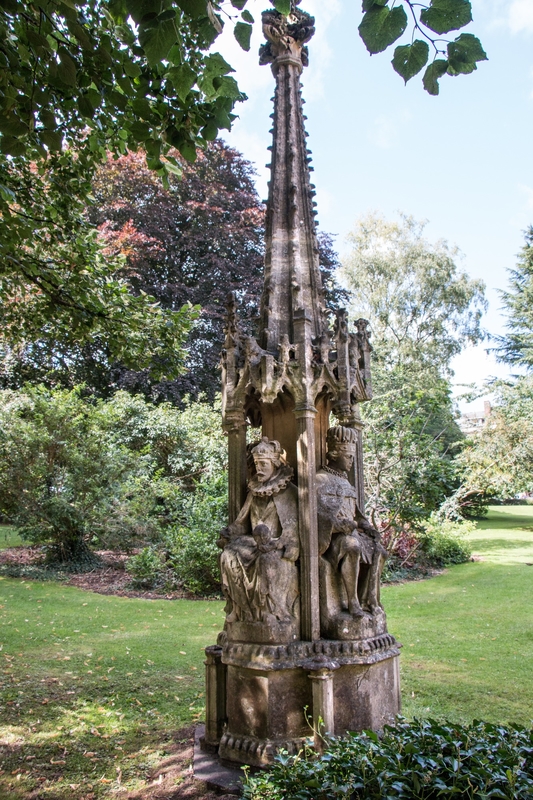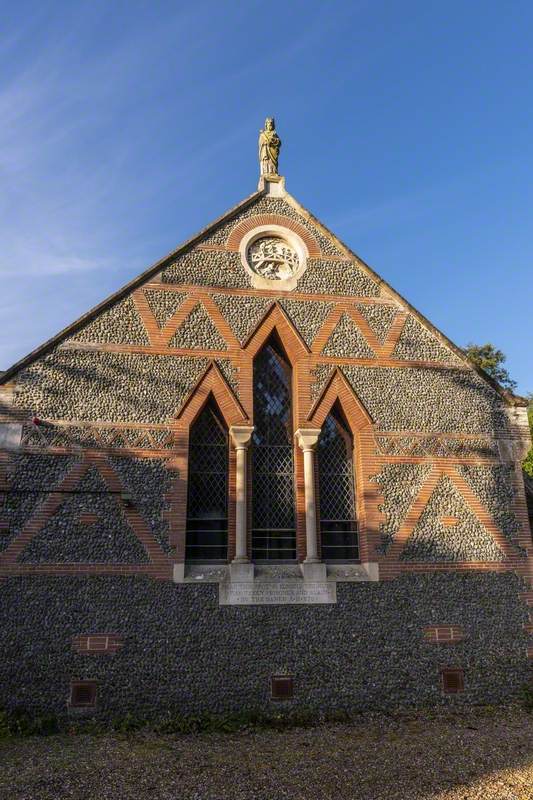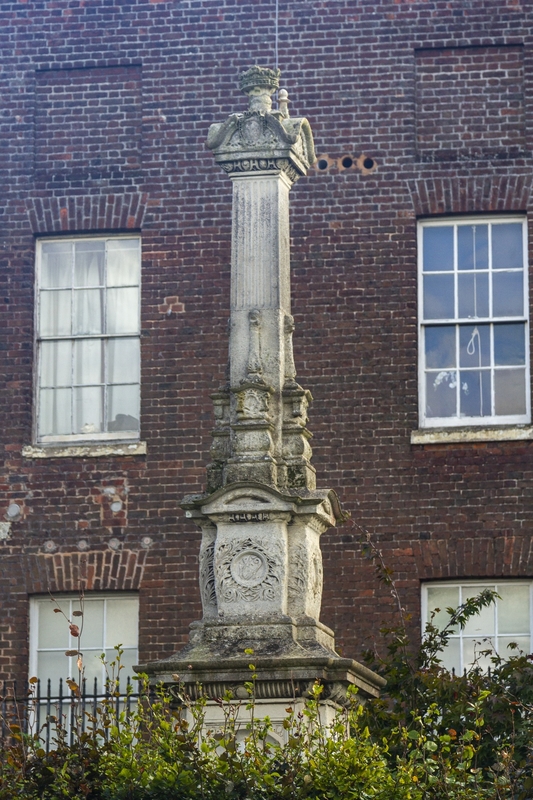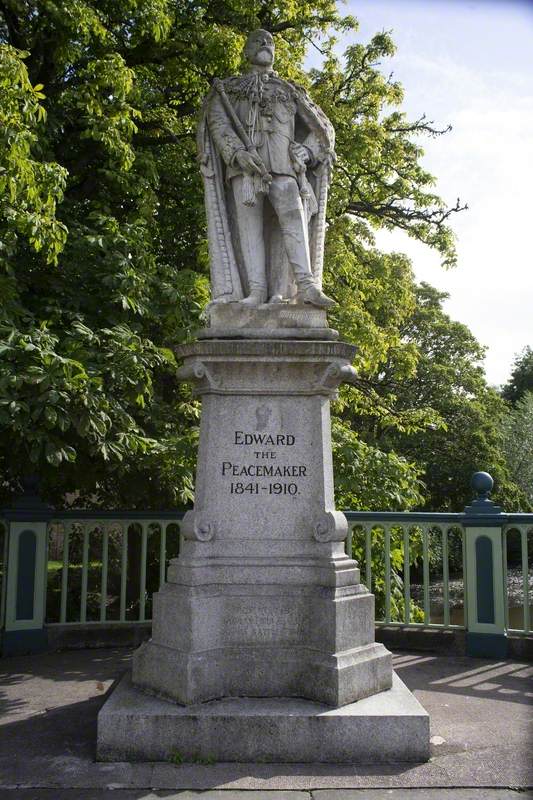
Edward VII, The Peacemaker 1912
Harry Hems (1842–1916)
Henry Hems [commonly known as Harry Hems] was born in Islington, London, England on 12 June 1842. After serving a seven-year woodcarving apprenticeship in Sheffield in the late 1850s and early 1860s, he returned to London. In 1866 he moved to Exeter in Devon to work on the building of the Royal Albert Memorial Museum. He subsequently remained in Exeter where he established a workshop. The business undertook repairs to several medieval churches and created work for a number of new churches. It has been calculated that by 1881 Harry Hems had worked on over 400 churches and 100 public buildings. In the 1890s his sons, Greville (Grevi) Chester Hems (1869-1935), Harry Turner Hems (1873-1952) and William Hems (1879-1940) joined the firm which was subsequently renamed Harry Hems & Sons.
Among the commissions carried out by Hems's firm were: the reredos at St Ann's Church, Hessenford, Cornwall (1883); the pulpit, Holy Trinity, Westward Ho! (1885); restoration of 14th century screens at St Andrew's, Aveton Gifford, Devon (1885); the pulpit, alabaster font, oak carved screen, stalls and miserere seat designed by the architect, G.H. Prynne of Newton, for St Peter Port Church, Guernsey (1886); a carved oak scroll for the Guille Allés Library, Guernsey; carvings in the choir stalls at Truro and Lincoln Cathedrals (the latter c.1891); restoration of the high altar screen at St Albans Cathedral under the supervision of Sir Reginald Blomfield, architect, including the addition of figures to blank niches and a cross (a 'Resurrection' in marble by Alfred Gilbert was also added) (1899); restoration of the village cross at Northlew, Devon (1900); memorial tablet and window to R.D. Blackmore, Exeter Cathedral (1901-04); a memorial to H.M.S. 'Doris' (captured during the South African War), Devonport Park, 1903; reredos for the church of St. Mary and St. Michael, Doddington, Northumberland (1903); and works in America and Australia. [For a more complete list of the firms’ projects see BIFMO]
Harry Hems and his firm participated in and won prizes at the Centennial International Exhibition in Philadelphia in 1876; the Exposition Universelle in Paris in 1878; and the Chicago World Fair in 1893.
Harry Turner Hems and Wilfred Hems continued the business until their retirement in 1938. Harry Hems died on 5 January 1916 and is buried in Exeter.
Text source: Arts + Architecture Profiles from Art History Research net (AHRnet) https://www.arthistoryresearch.net/
